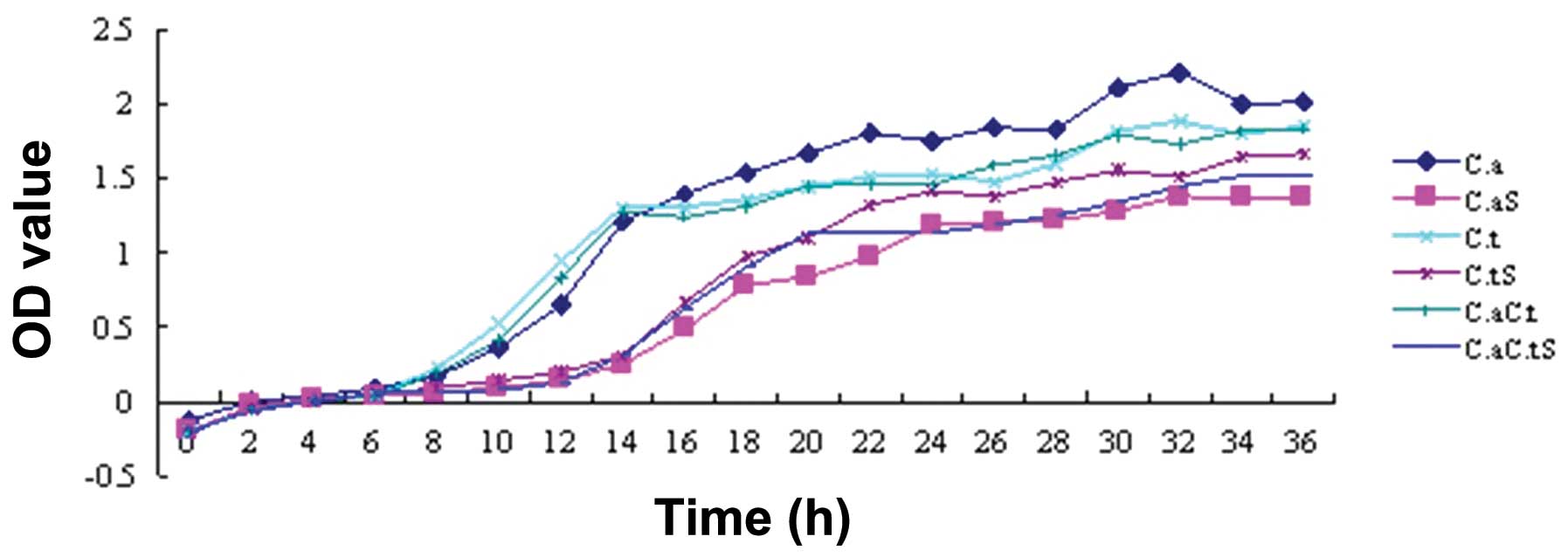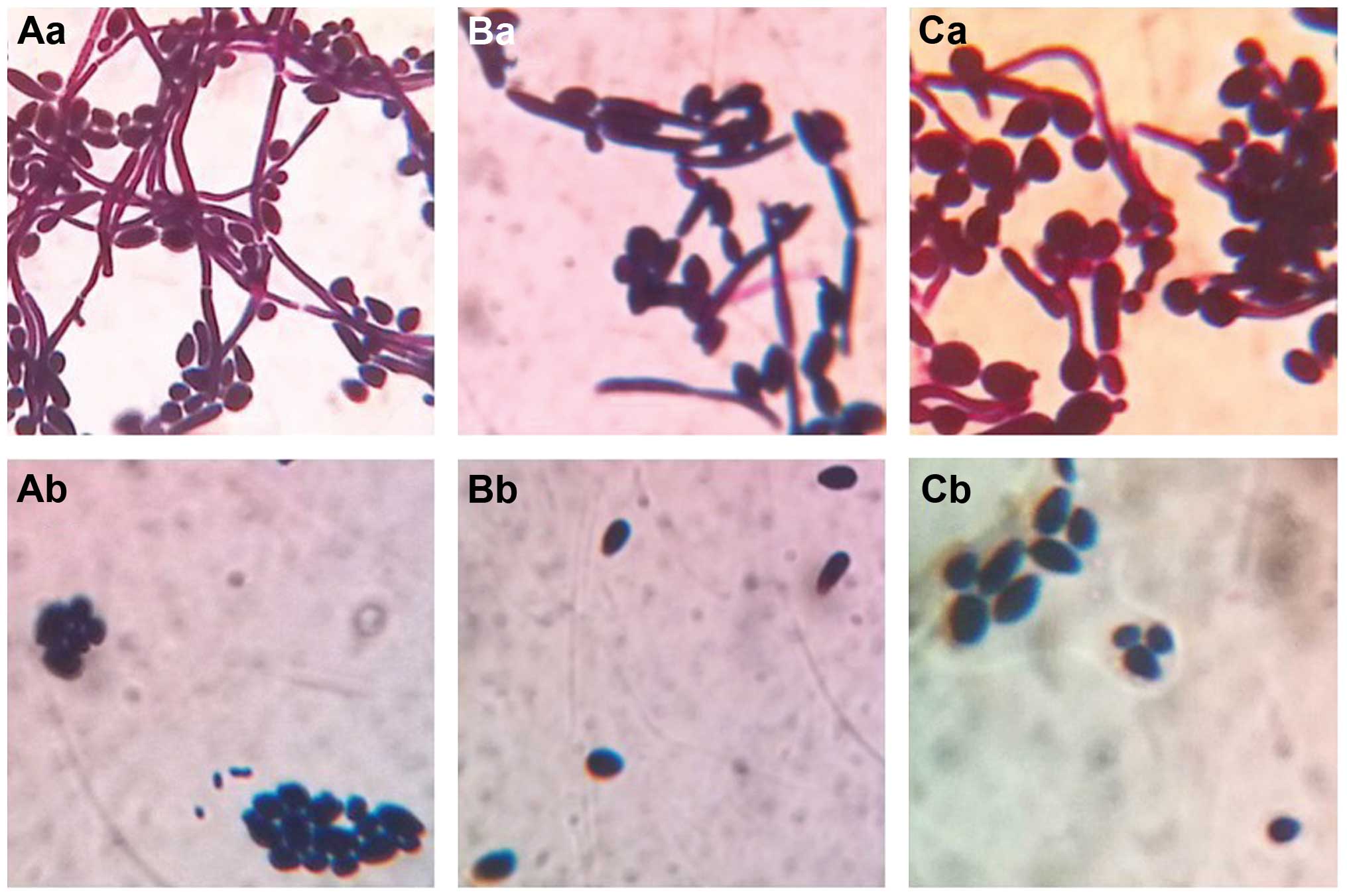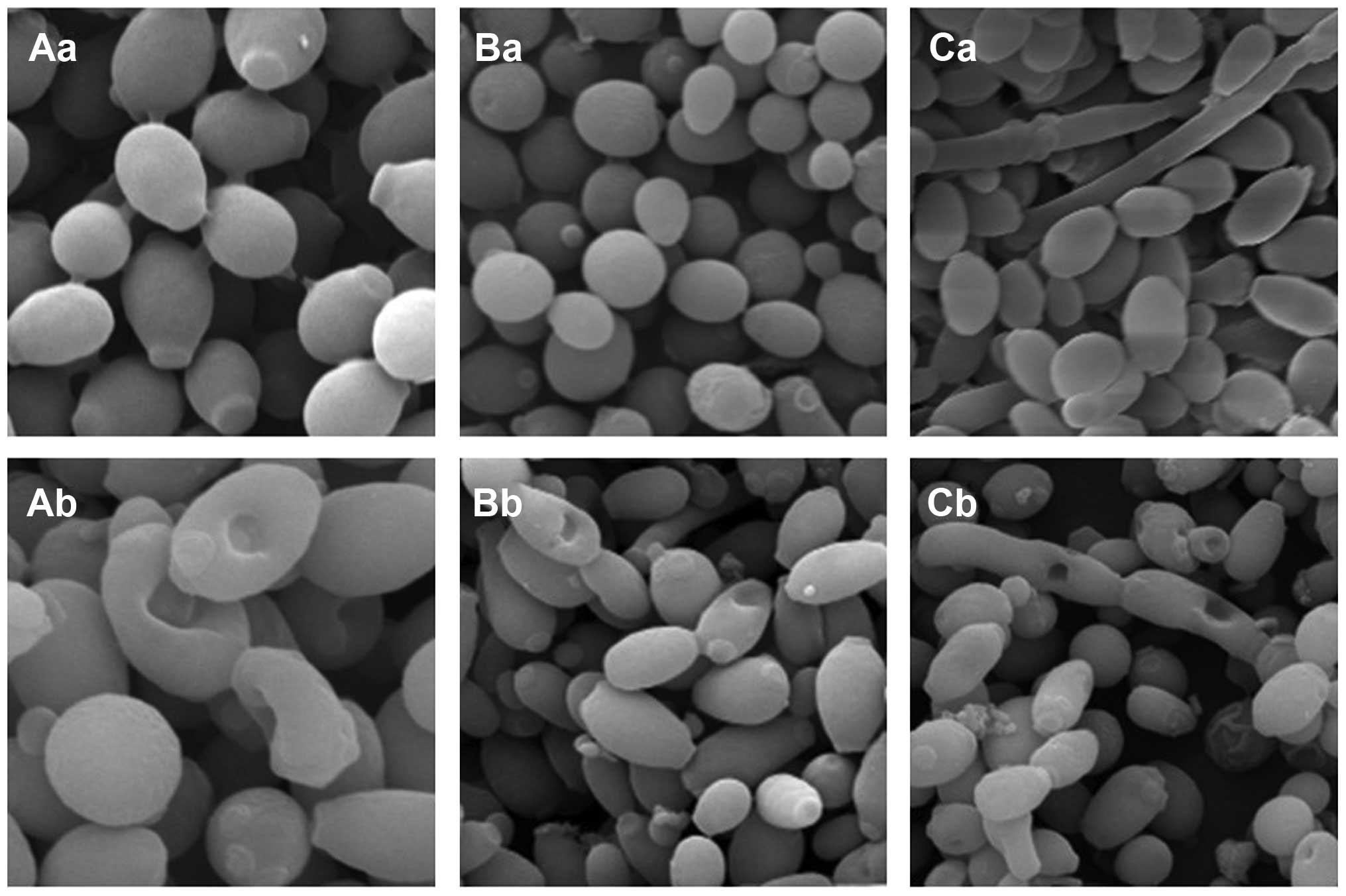Antagonistic effect of protein extracts from Streptococcus sanguinis on pathogenic bacteria and fungi of the oral cavity
- Authors:
- Published online on: March 12, 2014 https://doi.org/10.3892/etm.2014.1618
- Pages: 1486-1494
Metrics: Total
Views: 0 (Spandidos Publications: | PMC Statistics: )
Total PDF Downloads: 0 (Spandidos Publications: | PMC Statistics: )
Abstract
An antibacterial substance from Streptococcus sanguinis (S. sanguinis) is known to have an inhibitory effect on putative periodontal pathogens, but its inhibitory effect on pathogens of oral candidiasis is unknown. In this study, intracellular and exocrine proteins were extracted from S. sanguinis. The antagonistic effect of the protein extracts on Prevotella intermedia (P. intermedia) and Porphyromonas gingivalis (P. gingivalis) was detected by a well‑plate technique, and the effects of the protein extracts on biofilms formed by these bacteria were evaluated by confocal laser scanning microscopy. The antagonistic effect of the protein extracts on pathogenic fungi was investigated using Candida albicans (C. albicans) and Candida tropicalis (C. tropicalis). The growth curves of C. albicans and C. tropicalis were determined from ultraviolet absorption measurements, their morphological changes following treatment were observed by optical microscopy and scanning electron microscopy, and the effects of the protein extracts on the thickness of their biofilms and the distribution of dead/live bacteria within the biofilms were detected by confocal laser scanning microscopy. The results showed significant inhibitory effects of the intracellular proteins extracted from S. sanguinis on pathogenic bacteria (P. intermedia and P. gingivalis), fungi (C. albicans and C. tropicalis) and the biofilms formed by them. Furthermore, the growth curves and morphology of C. albicans and C. tropicalis were altered following treatment with the intracellular proteins, resulting in disc‑like depressions in the surfaces of the fungal spores and mycelia. By contrast, the exocrine proteins demonstrated no significant inhibitory effect on the pathogenic bacteria, fungi and the biofilms formed by them. Thus, it may be concluded that intracellular proteins of S. sanguinis have antibacterial activity and exert an antagonistic effect on certain pathogenic bacteria and fungi of the oral cavity.















